*
Is Jesus Based on Pagan Precedents?
.
COVERED IN THIS POST:
- A cult of parallels
- Comparing Apollonius of Tyana
- Kersey Graves as punching bag
- Compare John Remsburg
- Evaluating a range of different parallels
- Birth of Mithras
- Water into wine by Dionysos
- Horus the shepherd-king
- Isis and Horus, Mother and Child
- Do Christian fathers give accurate knowledge of the mysteries?
- Justin, Tertullian
- Celsus via Origen
- Cultural differences
- Divine copulation or virgin birth
- Variant forms of resurrection
- Dying for sin
- The pre-Gospel record contains no biographical parallels
- Paul’s soteriology dependent on pagan concepts
- The “cult of parallels” only arises with the Gospel story
- Robert Price’s “mythic hero” archetype
- Leaving a mark on history
- Homer, Confucius, Lao-Tze, Buddha, William Tell, Aeneas, Romulus, Remus . . .
.
* * * * *
Claim 4: The Nonhistorical “Jesus” Is Based on Stories About Pagan Divine Men
(Did Jesus Exist? pp. 207-218)
.
Bart Ehrman now addresses what is undoubtedly the most controversial aspect of mythicism, or at least of some expressions of it. It forms very little of my own case for a mythical Jesus and I admit that this whole area must be approached with caution and qualification. One might call it “a cult of parallels.”
As Ehrman puts it,
. . . now rather than arguing that Jesus was made up based on persons and prophecies from the Jewish Bible, it is claimed that he was invented in light of what pagans were saying about the gods or about other “divine men,” superhuman creatures thought to have been half mortal, half immortal. (DJE? p. 207)
.
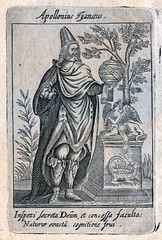
Comparing Apollonius of Tyana
He gives as an example the career of Apollonius of Tyana, an ancient sage who was reputed to have had a miraculous birth, gathered disciples, taught a spiritual ethic, healed the sick, was in part divine, and after death at the hands of authorities came back to appear to his followers.
Apollonius is perhaps not the best analogy to offer in these circumstances, since he was a figure who apparently lived not prior to or even contemporaneous with the reputed Jesus, but a little after him (he is supposed to have died 98 CE). So there can be no question that early Christians modelled their Jesus on Apollonius. But he does represent a class of ‘divine man’ (the theios anēr) in the ancient world, including much older figures of dubious existence like Heracles, some of whose characteristics the story of Jesus shared.
Ehrman claims quite legitimately that such comparisons with someone like Apollonius of Tyana have little if anything to do with the question of Jesus’ existence. Since Apollonius himself is almost certainly an historical figure (we have a little better attestation to his existence than we do for Jesus), this shows that historical persons can acquire extensive legendary characteristics. But what of those figures who are generally not judged to be historical, more god than man, incarnated to earth in an undefined or primordial past?
.
Trotting out Kersey Graves

Here Ehrman latches onto the very worst and most notorious expression of parallel-hunting in the history of mythicism: Kersey Graves’ 1875 The World’s Sixteen Crucified Saviors. Poor Kersey has become the favorite punching bag of historicists, much of it due to his own fault. Ehrman styles his work as “an exaggerated set of mythicist claims” with some justification, but his own remark that
Graves provides not a single piece of documentation for any of them. They are all asserted, on his own authority. (DJE? p. 211)
is itself an exaggeration. Graves’ references are anything but exact or even useful, but he is not quite appealing to his own authority when he says things like: “Their holy bibles (the Vedas and Gita) prophesy of [Chrishna] thus,” and goes on to quote several sentences from those bibles (1960 reprint, p.297). Graves hardly made up these passages himself.
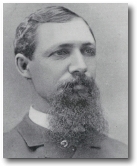
The point is, as inefficient and unreliable as Kersey Graves is, and as doubtful as many of his parallels are, he was part of a school of scholarship around the end of the 19th century which perceived that much of the story of Jesus shows an extensive commonality with pagan precedents, either of the mythic hero and divine man or of the myths of gods or demigods who had come to earth. In dismissing the whole thing as unrelieved poppycock historicism does itself no favor. Others in that field, such as rationalist author John Remsburg in The Christ, did a better job than Graves in pointing to primary sources for many of his examples. It is perhaps telling that of that era of scholarship, Ehrman chooses to place only Kersey Graves in the hot seat.
.
The need for interpretation
The problem with this “cult of parallels” is that many, perhaps most, are based on interpretation. As I say in Jesus: Neither God Nor Man, Appendix 3,
The primary sources from which such comparisons are made are a motley uncoordinated array of texts and fragments of texts, artifacts, frescos, uncertain records of traditions and rituals, excavated temples and places of worship that require interpretation and a careful gleaning of their significance. (JNGNM, pp. 664-665)
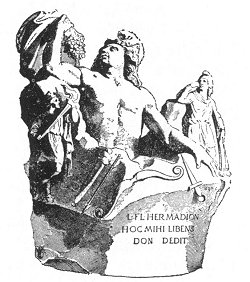
Ehrman brings up the example of Mithras, noting that the interpretation of Mithraic artifacts (there are no texts) is much debated. An alleged parallel one often encounters is the birth of Mithras being attended by shepherds. The idea comes from several sculptural representations of Mithras’ birth, in which he emerges from the head of a rock, the rock being the cosmos. At the base of the rock are attending figures who have suggested to some the idea of shepherds. (Others reject this in favor of seeing them as the common Mithraic figures of Cautes and Cautopates.) The rock itself, and the known fact of the tradition that Mithras slew the bull in a cave, have suggested that the birth was seen as taking place in a cave, which not only supports the shepherds interpretation, it leads to the ‘parallel’ that Mithras was born in a cave as Jesus was born in an outdoor enclosure (manger).
Such an interpretation is certainly a weak one, and should not be presented as something established. Others are stronger, such as Jesus turning water into wine in imitation of Dionysos, or Jesus as the good shepherd being ultimately derived from Egyptian stylings of Horus. Such parallels need not always be regarded as consciously borrowed (although the Christian turning of the picture of Isis and Horus into the Madonna and Child is unabashed appropriation and is probably indicative of wider plagiarizing). They are common mythemes in the mythology of the age which early Christians plugged into in their effort to portray their Jesus as possessing the same desirable qualities and features which rival gods and god-men did. To ignore such parallels and claim that Jesus has a unique set of historical features and underwent a unique set of historical experiences is a stance open to ridicule.
.
Did the Church fathers know the mysteries?
.
Ehrman now makes a comment which is perhaps as ludicrous as the common apologetic proposal that the mystery cult gods’ features of death and rising were in fact borrowed from Christianity (to be discussed in the next instalment). He dismisses the similarities which Christian fathers like Tertullian and Justin acknowledge between the cults and Christianity as quite possibly mistaken. What, after all, would they have known about “secret” societies? He suggests:
It was because they wanted pagans to realize that Christianity was not all that different from what other pagans said and did in their religions so that there would be no grounds for singling out Christians and persecuting them. The Christian sources that claim to know something about these mysteries, in other words, had a vested interest in making others think that the pagan religions were in many ways like Christianity. For that reason—plus the fact that they would not have had reliable sources of information—they generally cannot be trusted. (DJE? p. 214)
This suggestion fails on more than one count. Even if the cults had a proscription in the direction of secrecy, it is one thing to accept that no writer would openly contravene it by setting forbidden knowledge down on paper (and no one apparently did). It’s another thing to think that no knowledge of what went on, or what the cults believed in, ever came out through word of mouth from the millions over the centuries who had become initiates. Moreover, would Justin or Tertullian be likely to present made-up statements about the mysteries which many pagan readers would have been in a position to deny?
Besides, Origen gives us evidence that Celsus was making the same kind of accusation against the Christians: that their beliefs and practices were nothing new over those of the pagan mysteries and other mythology. And we are not talking here exclusively of the secrets of the cults, but of common mythemes generally.
Justin would hardly have gone to the extent of accusing the demons of making up counterfeits of Christian ritual ahead of time if he was not speaking of clearly known parallels between the rival faiths. The related apologetic suggestion that Justin didn’t know what he was talking about is a sign of desperation.
.
When is a parallel not a parallel?
.
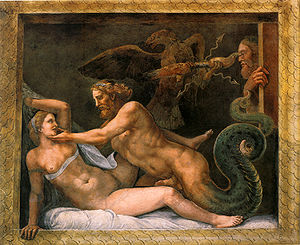
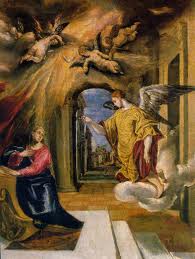 Ehrman also indulges in another apologist tactic. Something that is said to be common between Jesus and a pagan hero or god is not really a parallel at all. In the matter of the “virgin birth” Ehrman points out that this “came to mean that Jesus’s mother had never had sex.” In pagan divine men, on the other hand, impregnation was not by any ‘holy spirit’ but by the god himself in a form which definitely involved sex. “The child is literally part human and part deity.”
Ehrman also indulges in another apologist tactic. Something that is said to be common between Jesus and a pagan hero or god is not really a parallel at all. In the matter of the “virgin birth” Ehrman points out that this “came to mean that Jesus’s mother had never had sex.” In pagan divine men, on the other hand, impregnation was not by any ‘holy spirit’ but by the god himself in a form which definitely involved sex. “The child is literally part human and part deity.”
But that is precisely what Christians were claiming, part human through Mary, part God. The difference in regard to whatever act produced either one is beside the point. Early Christians were not primarily motivated by a desire to have Mary immaculate; they wanted Jesus to have a divine father, regardless of the process. Considering that Jews were far more sexually inhibited than pagans (Paul’s fixation on sins of the flesh seems pathological), they were not likely to come up with a seduction or rape of Mary by a penis-wielding God in human form.
Although Ehrman does not bring it up here, another parallel that is allegedly not a parallel is the resurrection of Jesus, which is claimed to be unique from those of the pagan savior gods. Osiris was not raised to earth or to his former human body; he simply went to the Underworld to rule over the dead. No other dying god returned to flesh—though a sort of exception is usually made for Dionysos. (A reassembled Osiris even with a false member was alive enough to father Horus on Isis, an accomplishment outstripping anything Jesus did after emerging from his tomb.)
But all this is basically a matter of cultural differences. The Greeks had no fixation on having the dead rise to their former bodily state; the bliss of the soul in the afterlife was what mattered. Their central point was that the god, though killed, was revivified; he conquered death and went on to a life in the spiritual world. This conferred guarantees on the initiates.
Besides, this is precisely the picture created in the epistles, which scholarship has acknowledged. In the thinking of Paul and the other epistle writers, there is no sign of a resurrection for Jesus in any former earthly flesh. He seems to proceed directly to a spiritual rising in heaven; he died, then he came back to life and ascended to take his seat at the right hand of God (sometimes with a detour to Sheol, or a heavenly sanctuary to offer his spiritual blood). Whether one goes to a high heaven and the other to an underworld makes no difference. It would seem that this is indeed a legitimate parallel between Jesus (even in his later Gospel form) and the mystery cult gods, one which too many scholars have been keen to deny or obscure. (Gunter Wagner in his Pauline Baptism and the Pagan Mysteries is a classic case, seconded by Jonathan Z. Smith’s writings on the subject).
Note: This topic and the overall issue of comparison between the mysteries and Jesus is dealt with at length in the next instalment.
.
Dying for sin
Ehrman makes the point that no pagan savior god was said to die in order to atone for humanity’s sins. Again, a cultural difference, again related to the Jewish obsession with sin and disobedience to their God. I’m not sure what Ehrman thinks to prove by pointing out that there is no pagan parallel to this aspect of Christian soteriology. This is indeed an exclusively Christian feature, though it is hardly one which has to relate to a death on earth; a sacrifice in heaven (as Hebrews demonstrates) could confer salvation just as well. However, this is a soteriological feature that we see little evidence of even in Christianity before Paul’s own gospel (as in 1 Cor. 15:3).
I’ve pointed out earlier that in passages like the pre-Pauline hymn of Philippians 2:6-11 and the Ascension of Isaiah, Jesus’ sacrifice seems to be for the purpose of overcoming the demon spirits or being given power over the universe. His resurrection enables the devotees’ resurrection, but not specifically through forgiving their sins. The focus in Revelation is on the former, with only a brief nod in the direction of the latter.
No doubt early Christian soteriology was in a state of flux as ideas were being formulated and solidified. One Hollywood movie (was it The Robe, or Ben-Hur?) naively had one of Jesus’ followers standing at the foot of the cross and intoning: “He has given his life to forgive the sins of the world,” or words to that effect. Paul was probably instrumental in the eventual adoption of this central interpretation of the crucifixion.
.
When the gentiles took over
Ehrman suggests that similarities to pagan precedents appeared only when Christianity moved beyond its Jewish roots and developed features for Jesus that gentiles could relate to. Earlier Jewish-Christians, Ehrman claims, tended to portray Jesus in Old Testament terms. Unfortunately, this picture does not work in light of the actual texts. If we presume that the evangelists were essentially gentile and reflected gentile interests (possibly excepting Matthew), there is as much drawing on Old Testament precedents in them as there is on mythemes grounded in pagan traditions.
Moreover—and this is central to our question of parallels—the entire pre-Gospel record is almost devoid of the common type of parallels which are in debate here. The vast majority of such parallels are of a “biographical” nature, but there is no biography of Jesus in the epistles. No virgin birth, no nativity elements, no gathering of disciples, no healing miracles, no details of Christ’s crucifixion, no return from the grave in flesh. Not even echoes of Old Testament figures and events. Ironically, the only things that do parallel previous expressions are the principles of salvation theory, and these are almost exclusively pagan, not Jewish.
Paul’s entire soteriology is made up of Christ’s death and rising, salvation through unity with the god and a sharing in his experiences, a baptismal rebirth, sacred meals commemorating foundational activities of the god, the very concept that there was a son and emanation of the highest Deity—these things are not derived from Jewish precedents. At best, some basics may be present in the philosophy of Hellenistic Judaism.
.
Paul vs. the evangelists
.
Why do we not find biographical parallels in Paul and the other epistle writers to elements in pagan savior god and hero mythology? Had they not felt the same urge to portray an historical Jesus in heroic ways, especially since even their audiences and converts had a prominent gentile component, as is evident from the struggle over Jewish principles and whether gentiles had to conform to them? If Jesus had lived on earth in the same way as pagan heroes like Alexander, or was competing with savior gods whose myths had an earthly character since such myths had arisen in settings of a distant or primordial time on earth, why was Paul’s Jesus not subject to the same embellishment and imbedding in an earthly time, place and identity, even if exaggerated and mythologized—especially if he had indeed been incarnated to earth?
The answer, of course, is that the Pauline Christ was formulated not from history and an historical figure, but from scripture and Platonic and Jewish sectarian views of the universe, wherein supernatural entities acted in heaven and generated their guarantees of salvation from the spiritual realm.
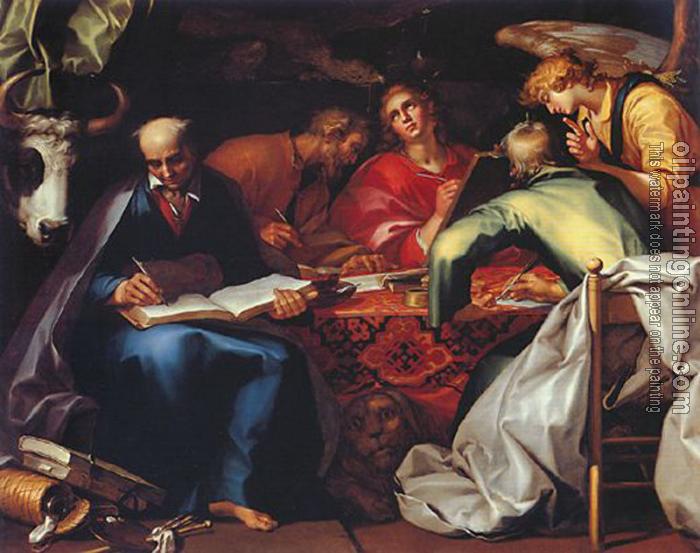
But what does this say for the role of the evangelists? Were they building on a real historical man by accreting to him familiar legendary features common in the atmosphere of the day? Was the process they followed a largely unconscious one, as they collected and reworked oral traditions about the recent man they were now calling a Son of God, the Messiah and Son of Man? But they were sitting at their writing desks, crafting literary documents, not preaching in the marketplace.
The pervasive midrashic conversion of the Hebrew scriptures into stories of Jesus was hardly unconscious. And the use of common mythemes in putting together those literary creations could hardly have been unconscious either. Moreover, did they purposely leave out any traditions that did not fit those mythemes and heroic characteristics? Did they reject as unusable anything they could not align with Old Testament precedents?
Ehrman may be technically correct in saying that even the conscious introduction of known features and mythemes into their story of Jesus does not in itself prove that he was entirely fictional. But it throws the burden of proof on historicists to show that he was not. Somewhere, somehow, they are going to have to find reliable evidence of the real historical man, and so far Ehrman has produced very little if anything of that nature, either in the Gospels or in the earlier epistolary record which he has been obliged to misrepresent in an effort to force it in that direction.
.
Robert Price’s Mythic Hero Archetype

Ehrman briefly addresses Robert Price’s contention in The Christ Myth Theory that the story of Jesus in the Gospels closely fits the archetype of the “mythic hero” found throughout antiquity, many of whose 22 characteristics fit Jesus. Regrettably, Ehrman undertakes no detailed refutation of Price’s case. Since a couple of other figures who also fit the archetype were historical persons, he limits himself to claiming that the same principle could be applied to Jesus. Price, however, maintains that in this case we have no separate information concerning Jesus, nothing “neutral” about him. “Every detail [of the Gospel stories] corresponds to the interests of mythology and epic.”
Ehrman begs to differ:
It simply is not true that all the stories in the Gospels, and all the details of stories, promote the mythological interests of the early Christians. The claim that Jesus had brothers named James, Joses, Judas, and Simon, along with several sisters, is scarcely a mythological motif; neither is the statement that he came from the tiny hamlet of Nazareth or that he often talked about seeds. (DJE? p. 217)
As I’ve pointed out before, it is not only mythological interests which produce invented details. Mark is writing a story. Something has to be put into that story. Background elements, features of the portrait of its central character which serve purposes within the story, touches of color or elements which advance the course of the plot. Jesus has to come from somewhere, and who knows what led to Mark’s choice of Nazareth (if it was his). If he had chosen Antioch, Ehrman would have claimed that this had to be true because it wasn’t identifiably in the story’s theological interests.
In the introduction to the parable of the sower (4:1-2), Mark provides a detailed set-up beside a lake, with a crowd so large Jesus had to get into a boat and go offshore and preach from there as the people crowded the water’s edge. This is hardly mythological. Does that mean the scene is historically true? As for talking about seeds, Jesus isn’t killing time by giving farming lessons, he is using them in making parables which embody his message, or at least the message that Mark wants to get across through his Jesus character.
.
Leaving a mark on history
Did Jesus leave a mark on non-religious—or as Price puts it, profane—history? In the sense of leaving a record in one’s own time, Price’s answer is no. Paul & Co. give us no footprint in the earthly sand, only on the pages of scripture and in the minds of Christ’s devotees who envisioned themselves as part of his “body.” And the Gospels, to historicism’s dismay, can show us only marks left by the imprint of the Old Testament and echoes of pagan myth. Even that mark did not surface until later, after the dissemination of Mark’s story, which still lacks any recoverable link with history. To offset that, Ehrman offers us only the odd feature that any novelist would provide.
But there is certainly no doubt that the idea of Jesus left a mark. Two thousand years later we are still dealing with that mark. But Homer, too, left an indelible mark on a thousand years of Greek history, and scholars are quite prepared to consider it possible that he was a non-existent legend who simply represented a class of poets of late Mycenean times. Confucius left a powerful mark on Chinese history, but today the existence of an actual sage of that name has been questioned. So too with Lao-Tze and the Buddha. A known fictional William Tell left his imprint on Swiss nationalistic identity. And for the Romans over a thousand years, Aeneas, Romulus and Remus were as real as their own grandfathers.
But time and effect can be misleading, and no guarantee of the reality we were led to believe produced them.
.
. . . to be continued
.
If you enjoyed this post, please consider donating to Vridar. Thanks!

“Ehrman suggests that similarities to pagan precedents appeared only when Christianity moved beyond its Jewish roots and developed features for Jesus that gentiles could relate to.”
Or, perhaps, there were no “Jewish roots” to Christianity, and it was a Hellenistic adaptation of Judaism all along.
Ehrman should just go ahead and join the evangelical scholars who say that the resurrection was a historical event, too. His arguments are the lame apologetics that Christians have been making for 1,900 years. The absurd premise that there were “pagans” on one side, and “Jews and Christians” on the other side, and these categories were hermetically sealed off from one another, is as hopelessly anachronistic and outdated as anything Kersey Graves wrote.
I support your work. And indeed expand on it: suggesting …
1) That Paul’s “spiritual” orientation, and nearly all Christian spirituality, comes from Plato’s hierarchial dualism. Which suggested that the whole universe is divided into two things – spirit, vs. matter. And that spirit was better, since it was immortal; while matter and the “flesh” were inferior, since all material things get old, rot, and die. Paul in fact quotes from Plato’s Theory of Forms, when he says that we here on earth, are just “imperfect” “copies” of more perfect, spiritual “forms” or “models” or “paradigms,” in “heaven.” That here on earth our flesh and body will die; but it is our spirit that lives on, like immortal spirits in heaven.
2) Some of the Historicist rejection of Mythicism, can be attributed to the simple ignorance of biblical scholars, of the basic ideas of MYTHOGRAPHY. As employed by Anthropology, etc.. The method of “parallels” is in fact, widely accepted in the study of myth; as expanded upon especially by Structuralist Anthropology, from structural linguistics, Vladimir Propp (inventor of the hero outline above?), and Claude Levi Strauss among others. The basic idea is that, since we do not have much linear history in many ancient periods, one way to work, is to compare myths we have, analystically, for structural points of similarity; “parallels.” If we find many of them, this suggests a possible historically derivative relationship between them. This is long-accepted in the field that Historicists ignore: Mythography.
I like your work. But of course, surveying the whole of Mythology or ANE myths, looking for parallels, can be exhausting work, and now and then you might miss some major connections
3) 2 Mac. 7, contains an account of brothers dying as MARTYRS, HEROES, to serve as a moral example, that it is hoped will save their country. At least parts of this account seem to exist well before Jesus. But they are not particularly Messianic.
4) Indeed, the best place to find a predessor root to a dying savior, would probably not be in Jewish culture; but in literature about dying “heroes.” Greco-Roman culture especially is full of them; from Socrates, etc.. People, heroes, martyrs, who die to save their country. A clear precursor to tales of Jesus.
5) The Greek mysteries would of course, be known to some Hellenized Jews. Indeed, we know a fair amount about the Eleusinian mysteries; which seem to be largely about Persephone, and the idea of “vegetative rebirth”; that plant life in the winter dies above ground, but survives underground (in Hades), in seeds and roots; to emerge back to life, back to the surface, in the spring. Easter.
6) I generally agree with your idea that Jesus in Paul, is “cosmic,” or I would say, “spiritual,” Platonic. Though there is an example from the Greek mysteries, in Persphone, of a bodily death, then internment for the winter months underground, then rising alive on the surface again.
7) More spiritual, were Egytian concepts of the afterlife; of the “Ka” and the “Ba,” spirits floating up to heaven it seems, after death. With elements too of an anointed mummy coming to life too.
In sum? Critics of Mythicism often just don’t know much about accepted principles and findings of Mythography. Specifically,there were some models of a rather earthly martyrdom and resurrection; but they are not particularly Jewish, as ANE; Greco-Roman and Egyptian. And in any case, many favor – as per your thesis – not so much physical, material resurrection, but the survival of the non-material “spirit.” This can be seen especially in Paul; whose “spirituality” and occasional attacks on the “flesh,” reflect a Platonistic idealism.
Indeed, as you say, Paul shows little awareness of Jesus as a real, material, physical, historical person. While his death and rebirth especially, seem heavily “spiritual,” proto-gnostic, and “cosmic,” in a quite Platonic sense. Paul’s language shows he borrowed directly from Plato’s Theory of Forms.
When this book comes out it will be epic. Kindle!
But the Old Testament already shares many of the themes and motifs of pagan myth. Thomas Thompson in his splendid chapter “Stories of the Sons of God” in his book “The Bible in History” shows how Lukes stories of the births of John and of Jesus , including the prophecies of their mothers, are a retelling of the miraculous births of Abraham’s sons, of Sampson, of Samuel (a tale told orinally probably of Saul) and so on.None of these births could have happened without the personal intervention of God, and because of this these characters will be able to establish justice, strike down the mighty, and make all things new. (Such stories are not of course to hide a factual illegitimacy of an historical character, but to show that such characters are special from birth).Gilgamesh, Sargon, Aeneas, Romulus, Theseus Plato, Alexander, Arthur,… are no different in this regard than Jesus.
And I suspect being a son of God does not prevent you being son of Joseph too,, in the same way that Theseus remained son of Aegeus.In fact in Jewish tradition where you could beget a son for your dead brother, or get you hand maiden to be your surrogate this would not be a problematic concept.
Good point. I’m glad you brought this up. Theseus was son of both a human and god, each sleeping with the mother on the same night. Heracles was the son of a god but grew up with a human “father”. No-one takes these myths as evidence of some struggle with embarrassment over the legitimacy of the births of these heroes.
Here I support both Doherty’s general argument, though I am adding to it here and there. And I support Hillman’s specific amendment; agreeing to Hillman’s reminder specifically that, as regards the notion that Jesus was “born of a woman,” as discussed elsewhere, this is a common Ancient Near East (ANE) motif.
But what more specifically do I make of “born of a woman” in my discussions with Hoffmann? Overall, I prefer not to get lost in lingistics too much. My own main “Mythtic” argument with Hoffmann to be sure, DID simply gloss Doherty’s basic complaint against Historicism. I mostly support Doherty’s insistence that on seeing Paul as concentrating on Jesus as physical, material, “born of woman,” overlooks the greater, overwhelmingly spiritual/”cosmic” sense that Paul has, of Jesus.
More, I expanded on this, by agreeing with Carrier that in part, the major point of Paul, was to assert that in general, Paul was oriented against assigning much importance to physical, material things; including the Physical/Historical Jesus.
Specifically? My argument against “born of a woman” was that Paul was making this specific argument against assigning importance ot the physical side of life: he was arguing that, in the matter of who is the true follower of God, physical material geneology does not matter.
Paul for most of his professional life, was trying to convert Gentiles to Christianity; gentiles who were not biologically Jews, or who were not born of Jewish mothers. Paul therefore had to fight the common notion among Jews and the “Law” that biological heirship, coming from a Jewish mother, was important or even necessary to be Jewish. Paul was speaking to gentiles who were not biologically Jewish – and who might have thought they could therefore not be “sons” or “heirs” of god therefore. Paul was therefore arguing that this old notion – of the importance of biological provinance; being biologically Jewish – should be dropped. One of Paul’s two or three major points in his works, was that gentiles – who were not biologically tied, by the “flesh” or “mothers” to the Jewish people – could, nevertheless, just by the act of mental conversion. We can become “sons” and “heirs” of God, simply by accepting ‘faith” in the “word”s of Jesus, in our mind or “spirit,” become “heirs” and “sons” of God. Even without a direct, biological, “flesh”ly descendency.
That I suggested was the main reason for Paul raising the idea of Jesus being “born of a woman.” Paul was mentioning it briefly as a sop or nod, to conservative or racial Judaism. Burt finally Paul raised the biological sonship of Jesus prominently … merely in order to strike it down. Paul arguing that you did not have to be biologically Jewish, you did not have to be related according to the “flesh” to Adam and Abraham, to be considered a “son” or “heir” of God. An argument which not only allows non-Jewish gentiles to convert, be accepted as “adopted” “sons” of God at last. But for that matter, it is an veiled argument that, no matter what Paul might had said to conversatives, the biological jewishness of Jesus himself, might have been unimportant.
Or indeed? Since Paul’s major argument is to dualistically attack the importance of all physical, material things? In favor of the “spirit”? Even the bare physical or historical existence of Jesus, might be rather unimportant. Paul’s arguments ultimately suggest.
Paul at times mentions the physical, material, historical, biological side of life. But Paul was quite spiritual; his major emphasis was mostly on the other side of life: the spiritual side. Indeed, his prevailing dualism mentions material, “flesh”ly things – but usually mentions them as inferior to spiritual things. So that if he now and then seems to speak of Jesus as a material being for example, with a “mother”? More often than not though finally, Paul mentions these material things … largely to reject them as ultimately unimportant. As compared to the act of mental “faith”; mentally joining ourselves to God. Not through biology, but through an act of mental or spiritual assent to God’s commands.
Material things were (usually, if not always) unimportant to Paul, compared to spiritual things. And if so, would he have been very scrupulous or attentive to attaching much importance to indications of a physical, material – Historical – Jesus? Indeed, I suggested, Paul mentions such things as jesus “born of a woman” … only to mark such notions for destruction. Destruction by a larger emphasis. Not on the historical, physical side of life; but on the spiritual side of life. On a spirituality which interpenetrates and effectively dissolves all material things altogether. On a spirituality which … even might suggest that the real, physical existence of a physical, historical Jesus, was relatively unimportant to Paul.